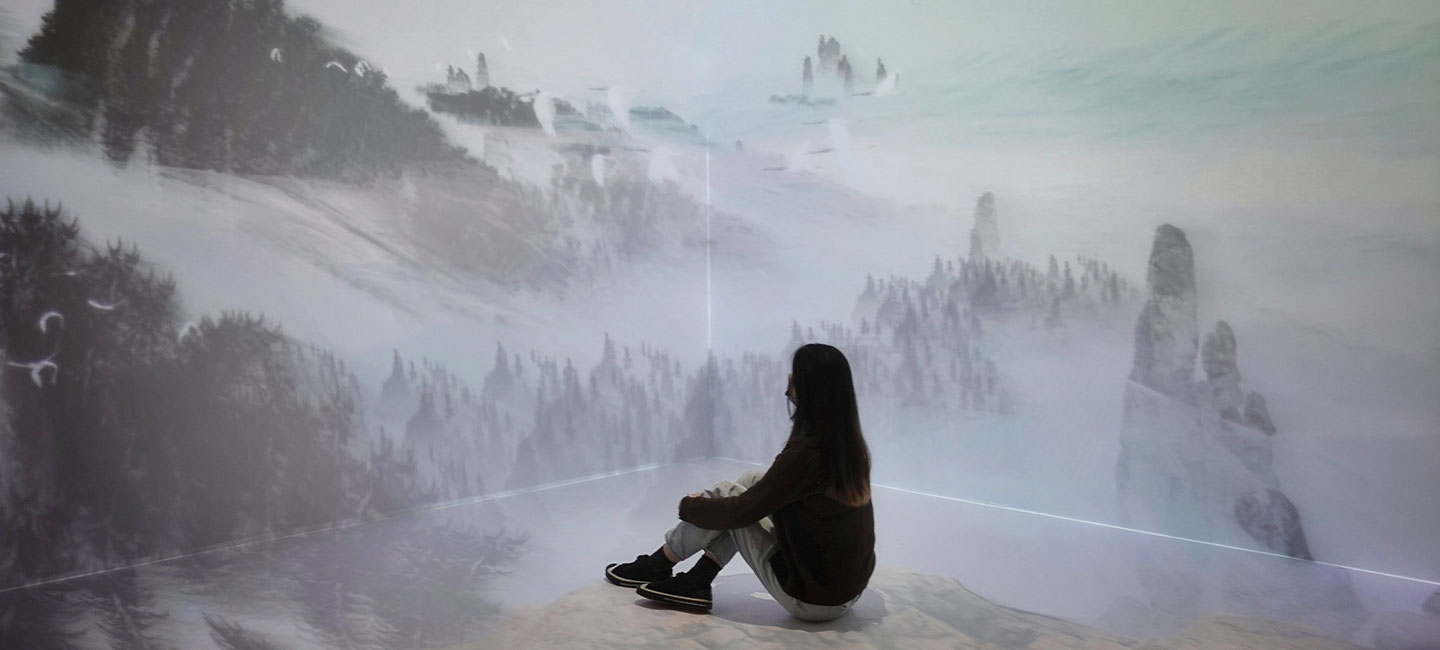這是一段美妙的經歷,我覺得藝術館和香港的未來都充滿了希望。
利張錫齡女士,60年是超過半個世紀的時間。然而,如果你仔細想想,當香港藝術館在今年慶祝她特殊的60週年紀念時,這只是人類歷史上的一個小插曲,有哪些里程碑式的時刻能說明香港藝術館創館以來一生的遺產?
我在20世紀80年代末來到香港,我記得大家都說這是一個文化沙漠。我並不覺得是這樣的,因為香港有著非常活躍的民間傳統,只是當時它並沒有建立各種文化機構。因此,當博物館於1991年在尖沙嘴建成時,我認為這是一個關鍵時刻,香港藝術館可以成為、有潛力成為香港和亞洲的一個非常重要的文化機構。
成為一個真正世界級的文化中心,我們離這個雄心壯志還有多遠呢?
在過去的20年裏,香港確實發生了很多變化。現在,香港的藝術拍賣行、藝術畫廊和吸引許多買家/收藏家前來的藝術博覽會,構成了整個藝術生態系統。現在我們還有一些位於尖沙咀和西九龍的新博物館,我認為香港完全可以在藝術和文化方面有所作為。
你認為我們如何才能不僅僅和香港人,而更廣泛地與中國其他地方的人們更好的分享這種文化?
事實上,我認為吳冠中很早就看到了香港的潛力和它所體現的東西,即香港同時囊括了東方和西方的精華。所以,他愛香港。但最重要的是,他發現香港以一種非常敏感的方式,講述自己的故事,他從中理解到了香港的深度,於是他將西方的痕跡帶入他的藝術中,使中國藝術現代化。
我們的博物館經歷了一次重大的翻新,並在2019年期間在社會動蕩中重新開放,我們都有點擔心博物館會發生甚麼,因為香港的許多地方都不安全,但實際上,情況恰恰相反。我們可以看到人們來到這裏,在靈感和寧靜中汲取營養。真的,對他們來說,這是一個在博物館裏的快樂和平的時刻,我想人們非常喜歡這樣。
透過這樣的窗口,我們可以看到維港帶給我們的一切,而博物館一直是個聚焦點,你會如何利用博物館來進一步影響你所期待的未來?
這是個很大的提問。多年來,我們一直在非常低調地做些事情,比如說有學校免費巴士將年輕人帶入博物館,我們通過周日音樂會在夏天吸引更多的公眾,我們有一個項目為來自不同背景的貧困兒童提供欣賞藝術的機會。我認為這種方式讓我們接觸到了香港最廣泛的社區,這也是博物館將繼續發揮的作用,培養年輕人,讓他們接觸新的想法和偉大的藝術。
It's a wonderful experience. I'm very hopeful for the Museum and its futureand for Hong Kong.
Nancy Lee, 60 years is more than half a century. Yet, if you think about it, it's just a blip in human history, as the Hong Kong Museum of Art celebrates its special 60th anniversary this year. What are some of the milestone moments that speak to the legacy of its lifetime?
I arrived in Hong Kong in the late 1980s and I recall everyone saying this is a cultural desert. I didn't find it quite like that because Hong Kong was very lively with folk traditions but it didn't have various established cultural institutions. So, when the Museum was built here on Tsim Sha Tsui in 1991, I thought this was the moment that the Hong Kong Museum of Art could become has the potential to become a very important cultural institution for Hong Kong and for Asia.
How close are we to that ambition, though of being a truly world class cultural center?
Hong Kong has really changed in the past 20 years. Now, we have an entire ecosystem of fine art fairs of art auction houses, art galleries and many buyers/collectors based here and some fabulous new museums both here in Tsim Sha Tsui, as well as West Kowloon. I think Hong Kong can totally make its mark in arts and culture.
And how do you think that we can better share that culture not only with the people here in Hong Kong and across China but more widely, too?
Indeed, I think Wu Guanzhong saw very early on the potential of Hong Kong and what it embodied, and it encapsulated both the best of the East and the West. So, he loved Hong Kong. But most importantly, he felt that Hong Kong told its story in a way that was very sensitive and understood its depth, and what it meant to bring traces of the West into his art and modernize Chinese art.
Our Museum underwent a major renovation and reopened during 2019 in the midst of the social unrest. We all had a bit of fear what might happen to the Museum as so many places in Hong Kong were not safe. But actually, the opposite happened we could see that people were coming here and drawing in inspiration and peace and quiet. Really, it was a moment of such joyful peace in the Museum for them and I think people enjoyed that very much.
The harbor offers us, and windows like these a look on to the world as it happens and the Museum has been a gathering point of that as it unfolds. How will you use the Museum to further impact the future that you anticipate is coming up ahead?
Well, that's a big question. What we have been doing very quietly for many years is to bring young people into the museum, through the schools by a free bus system. We have been drawing the wider public into the Museum through Sunday concerts and in the summertime, we have a program for underprivileged children from many different backgrounds to come and enjoy the art. I think this is the way that we have reached out to the widest community possible in Hong Kong. And this is a role that the Museum will continue to play, to nurture the young and to expose them to new ideas and great art.

